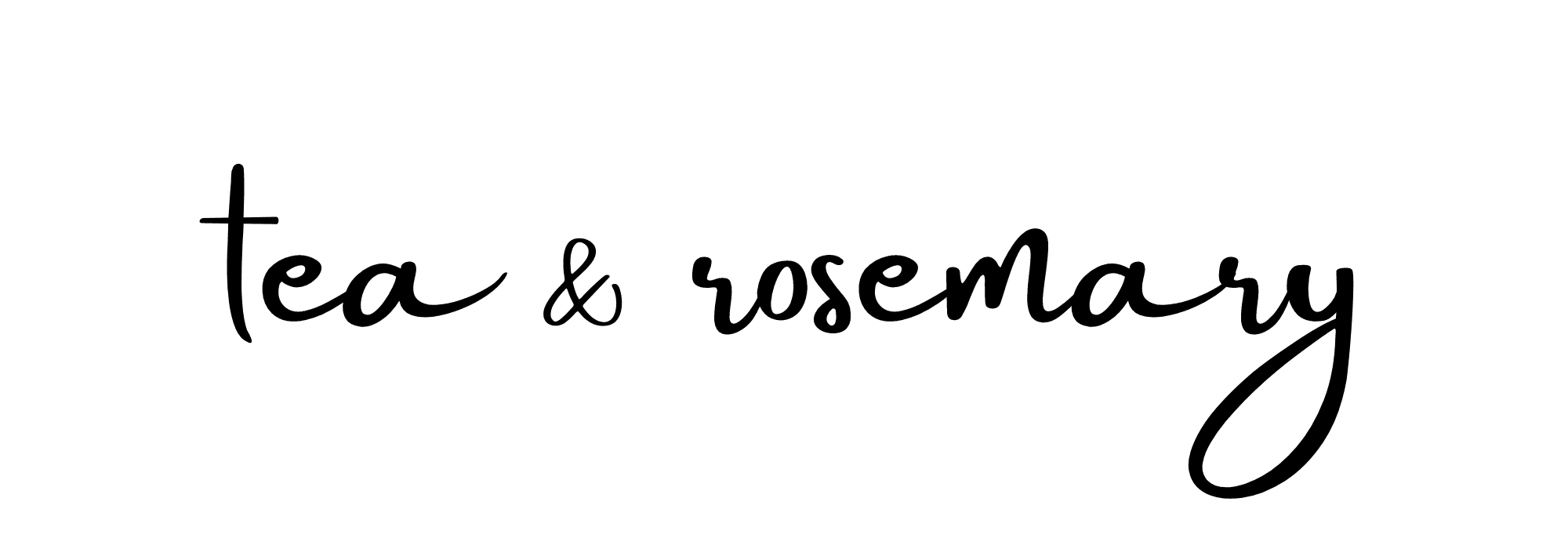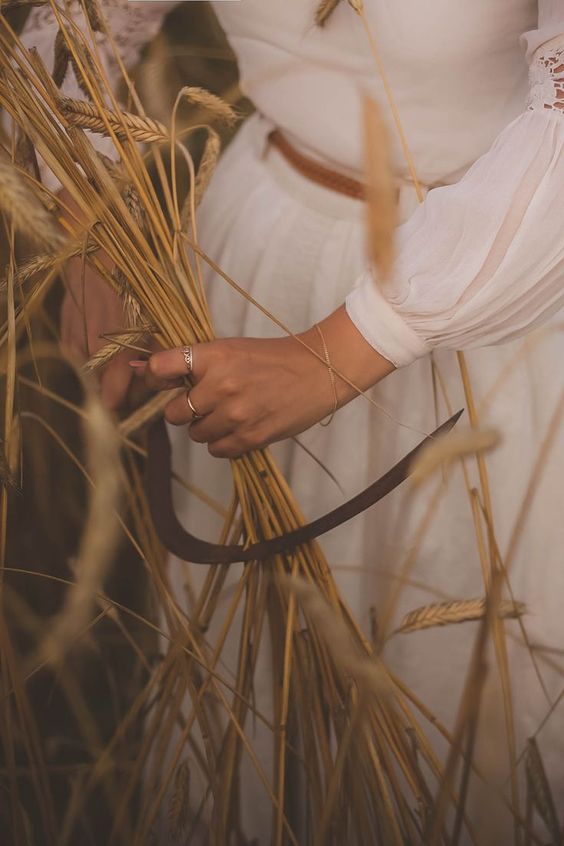As the wheel of the year turns and the warmth of summer envelops us, it is time to celebrate the bountiful festival of Lughnasadh, also known as Lammas.
This ancient Gaelic holiday marks the first harvest, a time to honor the abundance of the Earth and express gratitude for the gifts of nature.
In this blog post, we will explore meaningful ways to celebrate and embrace the spirit of Lughnasadh/Lammas.
What Is Lughnasadh/Lammas?
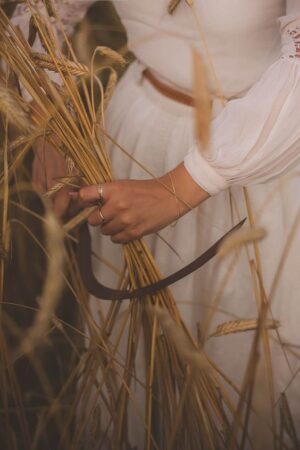
Lammas, also known as Lughnasadh, is an ancient festival that has its roots in Celtic and Pagan traditions. The word “Lammas” itself is derived from the Old English term “hlafmaesse,” which translates to “loaf mass” or “loaf feast.” This festival is celebrated on August 1st in the Northern Hemisphere, marking the halfway point between the summer solstice and the autumn equinox.
Historically, Lammas was a harvest festival that celebrated the first wheat harvest of the year. It was a time of gratitude and celebration for the abundance of the land and the fruits of agricultural labor. Communities would come together to harvest the crops and bake the first loaves of bread using the newly harvested grain. These loaves were often offered as a symbolic representation of the harvest’s bounty and were blessed in ceremonies held in local churches.
Lammas also held a deeper spiritual significance beyond the agricultural aspects. It was seen as a time of transition, marking the beginning of the harvest season and the gradual shift towards autumn. It was believed that the God, who represented the masculine energy of the harvest, began to decline in power while the Goddess, embodying the feminine energy of the Earth, started her descent into the underworld. This cycle symbolized the cyclical nature of life, death, and rebirth.
In Celtic mythology, Lammas is associated with the god Lugh, the god of light, skill, and craftsmanship. Lughnasadh, named after Lugh, was a time to honor his skills and talents as well as celebrate the harvest. Games, athletic competitions, and performances were held to showcase various skills and talents, paying tribute to the god of light and the harvest’s abundance.
Lughnasadh/Lammas Pronunciation:
Before we dive into traditions and rituals, let’s talk about pronunciation. These words aren’t easy!
The word “Lammas” is typically pronounced as “LAM-uhs.” The emphasis is placed on the first syllable, and the second syllable is pronounced with a short “u” sound, similar to the word “bus.” It rhymes with words like “dramas” or “llamas.”
“Lughnasadh” is pronounced as “LOO-nuh-suh.” The emphasis is on the first syllable, which sounds like “loo” as in “loo-k” or “loo-se.” The second syllable is pronounced as “nuh” with a short “u” sound, similar to the word “nut.” The third syllable is “suh” and rhymes with words like “buzz” or “fuzz.” So, when pronounced together, it is “LOO-nuh-suh.”
How Was Lughnasadh/Lammas Traditionally Celebrated?
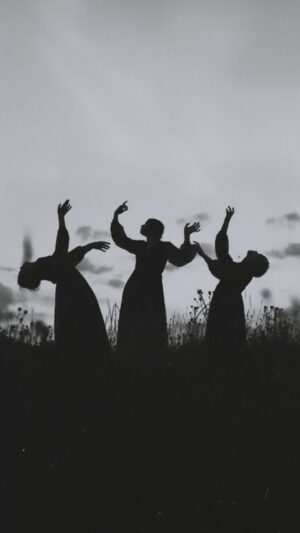
Lughnasadh/Lammas traditions go way back, so before we dive into modern-day Lammas rituals, I want to look at how the Celts celebrated this festival in antiquity.
While specific practices may have varied across Celtic regions and over time, here are some common ways in which the Celts celebrated Lammas:
1. First Fruits Offering: Lammas was a time to give thanks for the first fruits of the harvest. The Celts would gather the freshly harvested crops, such as grains and fruits, and offer them as gifts to the gods or spirits. These offerings were often made at sacred sites or in communal gatherings.
2. Bonfires: Fire held a special significance during Lammas celebrations. Large bonfires were lit as a symbol of purification and protection. People would gather around the bonfires, offering prayers, songs, and dances. Jumping over the flames was believed to bring luck and blessings for the coming months.
3. Bread-Making: Bread played a central role in Lammas celebrations. The newly harvested grains were used to bake special loaves of bread, often in the shape of the sun or harvested sheaves. These loaves symbolized the bounty of the harvest and were shared as communal feasts or given as offerings.
4. Games and Competitions: Lammas was a time for community bonding and celebration. Games, athletic competitions, and contests of skill were organized to entertain and bring people together. These activities honored the god Lugh, who was associated with craftsmanship and talent.
5. Corn Dollies: Creating corn dollies was a traditional practice during Lammas. Straw or dried corn husks were woven or braided into intricate shapes or figures. These corn dollies were seen as representations of the fertility of the land and were often displayed in homes or carried in processionals.
6. Rituals and Ceremonies: Lammas was a time for spiritual rituals and ceremonies. Druids and other spiritual leaders would lead ceremonies to honor the gods and goddesses associated with the harvest. Offerings, prayers, and invocations were made to ensure a bountiful harvest and express gratitude for the Earth’s abundance.
These are just a few examples of how the Celts celebrated Lammas. The precise customs and rituals may have varied depending on the specific Celtic tribe or region. Lammas was a time of communal celebration, giving thanks, and honoring the cycle of the seasons and the vital importance of the harvest for the Celtic communities.
Modern Lughnasadh/Lammas Rituals:

Nowadays, Pagans celebrate with Lughnasadh rituals that are both modern and traditional. There’s no wrong way to celebrate as long as you understand the purpose behind this pagan holiday!
1. Connect with Nature:
Lughnasadh is deeply rooted in the cycles of nature, so take this opportunity to immerse yourself in the natural world. Spend time in a garden, a park, or any natural setting that resonates with you. Observe the ripening fruits, the golden fields, and the beauty of the Earth’s bounty. Reflect on the interconnectedness of all life and the cycles of growth and harvest.
I also like to meditate in nature during Lammas. It’s typically warm out, allowing me to truly connect with nature and put my feet on the ground.
2. Create an Altar:
Crafting an altar is a wonderful way to honor the essence of Lughnasadh/Lammas. Decorate it with symbols of the harvest such as fresh fruits, grains, flowers, and ears of corn. Include items that represent abundance, such as a cornucopia or a small loaf of bread. Light candles in warm hues to evoke the vibrant energy of the season.
3. Share a Harvest Feast:
Gather loved ones and celebrate with a festive harvest feast. Prepare a meal using seasonal ingredients like freshly harvested fruits and vegetables. Bake bread or make corn-based dishes to symbolize the harvest’s abundance. As you savor the flavors, express gratitude for the nourishment provided by the Earth and the community that surrounds you.
4. Craft Corn Dollies:
Engage in a traditional craft by making corn dollies. These woven straw figures represent the spirit of the grain harvest. Create your own unique design, infusing it with your intentions and wishes for the coming season. Display the corn dollies as sacred symbols of the abundance and fertility of the Earth.
5. Offerings and Gratitude:
Lughnasadh/Lammas is an ideal time to express gratitude for the blessings in your life. Offer thanks to the Earth, the deities, and the spiritual forces that sustain you. Take a moment to reflect on your own personal harvest—acknowledge your achievements, personal growth, and the lessons learned. Consider writing down your gratitudes in a journal or offering them directly to the elements of nature.
6. Bake Bread
Bake bread from scratch, infusing it with your intentions and gratitude for the harvest. As you knead and shape the dough, focus on your connection to the Earth and the nourishing qualities of the grain. Share the bread with loved ones or offer it as a gift.
7. Ritual Of Gratitude:
Perform a ritual or meditation focused on expressing gratitude for the blessings in your life. Reflect on the abundance and growth you have experienced personally, as well as the broader blessings of the Earth and the harvest. Offer words of thanks, light candles, or make offerings to honor the cycles of nature. For the Celts, the fall signified the end of the year as the leaves died back, so this is similar to what we tend to do in December.
8. Divination and Reflection:
Use divination tools like tarot cards, runes, or scrying to gain insights into the upcoming season. Set intentions for the months ahead and reflect on what you hope to manifest in your life during this phase of the year. Because you’re heading into the dark period of winter, this is the perfect time for divination into the unseen realms.
6. Engage in Ritual and Ceremony:
Create your own meaningful ritual or ceremony to honor Lughnasadh/Lammas. You could gather in a circle with friends or engage in a solitary practice. Incorporate elements such as singing, dancing, drumming, or guided meditation to connect with the spirit of the season. Offer prayers, affirmations, or intentions that reflect your hopes and aspirations for the coming months.
7. Ritual Bonfire
A ritual bonfire is a wonderful way to celebrate Lammas, also known as Lughnasadh, and honor the spirit of the harvest.
Before lighting the bonfire, take a moment to set your intentions for the ritual. Reflect on the significance of Lammas and what you wish to release or manifest during this harvest season. Prepare offerings that symbolize your intentions, such as herbs, flowers, or written prayers.
Begin the ceremony by creating sacred space. You can cast a circle or invoke the elements, deities, or spirits that resonate with you. Offer a blessing or invocation to invite their presence and guidance during the ritual.
As the flames grow, visualize them representing the transformative energy of the harvest season and the light of inspiration. Approach the bonfire with your offerings. Speak or silently express your gratitude for the abundance in your life, the blessings of the harvest, and the lessons learned. Offer your symbolic items to the fire, releasing them with gratitude and trust in the divine flow.
Embrace the joyous energy of Lammas by dancing and moving around the bonfire. Allow yourself to fully immerse in the spirit of celebration, expressing your gratitude and connection with the elements and the cycles of nature. Sing, drum, or chant songs that uplift your spirit and honor the season.
As the bonfire burns, you can visualize any limiting beliefs, old patterns, or unwanted energies being transformed into ash. Release them into the flames, symbolically letting go of what no longer serves you. As the fire consumes these offerings, feel a sense of liberation and renewal.
8. Perform Lammas Specific Spells
Lammas is a great opportunity to work on spells that align with the themes of the season. Some of these include:
Abundance and Prosperity Spells: Lammas is an ideal time to focus on spells that attract abundance and prosperity into your life. You can create rituals or perform spells that harness the energy of the harvest to manifest financial stability, career success, or overall abundance. Use herbs, crystals, and symbols associated with prosperity in your spells.
Gratitude and Appreciation Spells: Lammas is a time to express gratitude for the blessings in your life. Consider crafting spells or rituals that help you cultivate a sense of gratitude and appreciation. Reflect on what you are grateful for, write down your blessings, and create a gratitude altar or jar to anchor your intentions.
Healing and Renewal Spells: Lammas can be a potent time for healing and renewal. Perform spells that focus on releasing old patterns, emotional wounds, or anything that no longer serves your well-being. Set intentions for healing and invite transformation, using herbs, visualization, or energy work to support your intentions.
Connection with Nature Spells: Lammas is deeply rooted in the cycles of nature. Use this time to connect with the natural world and perform spells that deepen your relationship with the Earth. Consider spells that honor the land, plants, and animals, or rituals that promote ecological healing and balance.
Nurturing and Self-Care Spells: As the harvest season begins, it is crucial to nurture yourself and practice self-care. Engage in spells or rituals that prioritize self-love, self-compassion, and self-care. This can include rituals for relaxation, setting boundaries, cultivating self-empowerment, or enhancing self-esteem.
Release and Letting Go Spells: Lammas marks the transition from summer to autumn, making it an opportune time to release what no longer serves you. Perform spells that help you let go of negative patterns, limiting beliefs, or any attachments holding you back. Embrace the transformative energy of the season and invite new beginnings.
9. Decorate Your Home With Harvest Materials
Embrace the rich colors of autumn in your decor. Use warm hues like gold, orange, red, and deep earth tones. Utilize dried corn husks to create crafts that celebrate the harvest. Make corn husk dolls, wreaths, or garlands to adorn your walls or doorways. You can also fashion miniature corn husk ornaments or place settings for a touch of rustic charm.
Display vibrant sunflowers, either fresh or dried, in vases or as part of floral arrangements. Sunflowers symbolize the energy of the sun and the abundance of the season. Bundle stalks of wheat and tie them with twine to create decorative bunches that represent the harvest’s bounty. Hang them on walls or place them in vases for a rustic and traditional touch.
lluminate your space with the cozy glow of candles and warm lighting. Use pillar candles in colors like gold, yellow, or orange to symbolize the harvest’s warmth and radiance.
Remember, rituals can be adapted to suit your personal beliefs, preferences, and available resources. Follow your intuition, honor the significance of the harvest, and celebrate Lammas in a way that feels authentic and meaningful to you.
Lammas Deities:
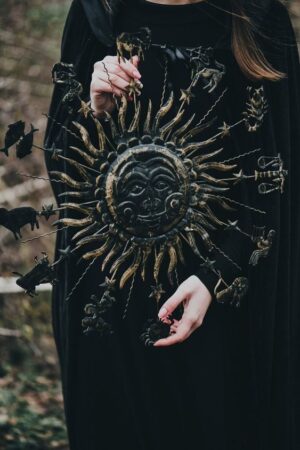
There are many deities you can choose to work with during the time of Lammas. This may mean that you leave an offering to the deity or do only one pathworking/meditation, or it can mean that you begin a long-term relationship with that deity.
Of course, this list isn’t exhaustive! I recommend checking out this post on autumn deities to get a feel for the types of deities that represent this turn of the seasons.
However, you can also continue your work with your current patrons. Almost every deity has a darker, more secretive side that can be accessed as the weather grows colder.
1. Demeter/Ceres:
In Greek and Roman mythology, Demeter (Ceres in Roman mythology) is the goddess of agriculture, fertility, and the harvest. She is often associated with the cycles of growth, abundance, and the nurturing of the Earth. Working with Demeter/Ceres can help you connect with the bountiful energy of the harvest and invoke her blessings for abundance and prosperity.
2. Lugh:
Lugh, from Celtic mythology, is a god associated with light, skill, and harvest. He represents the vibrant energy of the Sun, which nourishes the crops and supports growth. Lugh is often honored during Lughnasadh, the Celtic festival that corresponds with Lammas. Working with Lugh can inspire creativity, talent, and the fruitful manifestation of your skills and passions.
3. Persephone:
Persephone is a Greek goddess associated with the changing seasons, particularly the transition from summer to autumn. As the daughter of Demeter, she is connected to the cycle of life, death, and rebirth. By working with Persephone, you can explore themes of personal transformation, embracing the cycles of change, and finding inner balance.
4. Pomona:
In Roman mythology, Pomona is the goddess of fruitful abundance and orchards. She symbolizes the nurturing and cultivation of fruit-bearing plants. Connecting with Pomona during Lammas can invoke her energy of growth, fertility, and the sweet rewards of your efforts.
5. Tailtiu:
Tailtiu is an Irish goddess associated with the harvest and agricultural abundance. She is celebrated during Lughnasadh as the foster-mother of Lugh, who honors her through games and festivities. Working with Tailtiu can bring forth the essence of hard work, perseverance, and reaping the rewards of your labor.
Lughnasadh/Lammas Symbols:
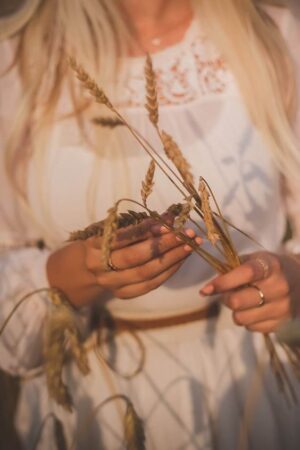
Various symbols are traditionally connected to this holiday, representing the themes of abundance, harvest, and the changing seasons. Here are some key symbols associated with Lughnasadh/Lammas:
Cornucopia: The cornucopia, or the “horn of plenty,” is a symbol often associated with Lughnasadh/Lammas. It represents abundance and prosperity, overflowing with fruits, vegetables, and grains. The cornucopia is a reminder of the bountiful harvest and the blessings of the Earth.
Wheat and Grains: Wheat, grains, and sheaves are potent symbols of Lughnasadh/Lammas. They represent the first harvest of the year and the culmination of the growth cycle. These symbols can be incorporated into decorations, altars, or crafts to honor the harvest and the fertility of the land.
Sunflowers: Sunflowers are vibrant and joyful symbols of Lughnasadh/Lammas. Their bright yellow petals and tall stature reflect the warmth and energy of the sun. Sunflowers are often associated with abundance, growth, and the sun’s life-giving energy during the peak of summer.
Bread and Loaves: Bread, particularly freshly baked loaves, holds significant symbolism during Lughnasadh/Lammas. It represents the culmination of the harvest and the transformation of the grains into nourishment. Baking bread or displaying loaves as offerings or decorations is a way to honor the bounty of the harvest and celebrate the sustenance it provides.
Harvest Tools: Tools such as scythes, sickles, and baskets are symbolic of the harvest and the labor that goes into gathering crops. These tools represent the efforts, skills, and hard work required for a successful harvest. Including representations of these tools in rituals or decorations can evoke the spirit of Lughnasadh/Lammas.
Bonfires: Bonfires are often lit during Lughnasadh/Lammas celebrations. They symbolize the transformative and purifying power of fire, as well as the gathering of the community. Dancing and jumping over the bonfire are common traditions associated with this festival, representing purification, blessings, and the release of old energies.
Colors: Colors associated with Lughnasadh/Lammas include gold, yellow, orange, and deep shades of red and brown. These colors represent the warmth of the sun, the changing leaves, and the ripening crops. Incorporating these colors into clothing, decorations, or ritual items can help create a festive and symbolic atmosphere.
These symbols can be used individually or in combination to create meaningful rituals, altar displays, crafts, or decorations for Lughnasadh/Lammas celebrations. They serve as reminders of the abundant harvest, the energy of the season, and the gratitude for the blessings of the Earth.
